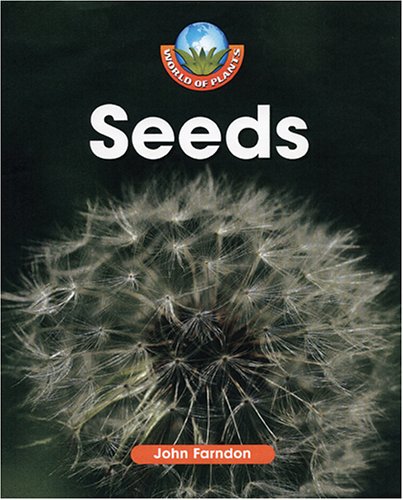-
Plant Classification
Richard Spilsbury, Louise Spilsbury
Paperback (Heinemann/Raintree, Sept. 1, 2002)Explains how plants are classified into 2 groups, vascular and nonvascular and discusses different types of plants. S
S
-
Why Do Plants Have Flowers?
Louise Spilsbury, Richard Spilsbury
Paperback (Heinemann, Aug. 1, 2016)Lots of different plants grow bright, colorful flowers. Plants have flowers to make seeds. Seeds are parts that can grow into new plants. Plants and animals produce young that grow up to be like themselves. This is called reproduction. Cats have kittens, birds lay eggs and most plants make seeds. M
M
-
The World of Ships
Philip Wilkinson
Paperback (Kingfisher, Aug. 18, 2005)The World of Ships is divided into four section--Trade and Discovery, Ships of War, Peopling the World, and Discovering Ships. Each section includes several page spreads focusing on specific themes and topics related to ships and seafaring. A glossary and an index are also included to build vocabulary and research skills. R
R
-
Seals and Sea Lions of the World
Nigel Bonner
Hardcover (Facts on File, Feb. 1, 2004)The 17th title in the "Of the World" series, this volume covers seals, sea lions and walruses. Information includes the distribution and zoology of the various species, and how they interaction with humans.
-
Crocodiles & Alligators of the World
David Alderton, Bruce Tanner
Hardcover (Facts on File, Feb. 1, 2004)Perceived for too long as predatory killers, crocodilians face their gravest danger--extinction--with little human help and sympathy. As this volume proves, alligators and crocodiles can be extremely fascinating. Examine this creature's anatomy to see why it makes such a fine hunter: its almost fully submerged body remains nearly invisible, its slit eyes help it see in the dark and judge distance precisely, and its tough skin protects it against the salt water. Many societies viewed crocodiles with awe because of their power and size, and even made them a part of their folklore and religion. Information on origins, evolution and distribution, courtship, reproduction, and many individual species paint a thorough portrait. Maps of their habitats, disappearing swiftly because of environmental damage, trace their presence worldwide, and excellent color photos bring these sometimes scary reptiles up close and personal. Blandford 192 pages, 40 color illus., 80 b/w illus., 6 x 9.
-
How Plants Grow
Carrie Branigan, Richard Dunne
Library Binding (Creative Co, July 30, 2005)A lively and colourful introduction to plants, designed to help children develop key scientific skills. Ages 5-7 years. P
P
-
World of Plants - Seeds
John Farndon
Hardcover (Blackbirch Press, Jan. 6, 2006)Nearly every plant begins life as a seed. This book examines germination, the ways seeds are spread, types and sizes of seeds, and the role of seeds in the diets of both humans and animals. Y
Y
-
Foxes, Wolves and Wild Dogs of the World
David Alderton, Bruce Tanner
Hardcover (Facts on File, Feb. 1, 2004)A guide to the wild members of the canine family, including foxes, wolves, coyotes and dingos. Sections include: classification and species; distribution and habitat; physiology and zoology; breeding and reproduction; food and feeding; behaviour and life cycles; and interaction with humans.
-
Primates of the World
Rod Preston-Mafham, Ken Preston-Mafham
Hardcover (Facts on File, March 1, 2003)Lemurs, monkeys, and apes: they're man's closest relatives, and their habitats are swiftly disappearing. See how they live in the wild, rear their young, establish social systems, and even communicate with each other.
-
How Do Meat-Eating Plants Catch Their Food?
Ruth Owen
Hardcover (PowerKids Press, Aug. 1, 2014)Who knew plants could be so terrifying? In this fascinatingly gruesome science title, readers will learn how infamous meat-eating plants such as the Venus flytrap catch their prey. With well-organized and clearly articulated text, readers will easily grasp important life science concepts. M
M
-
Bees of the World
Christopher O'Toole, Anthony Raw
Paperback (Blandford Pr, April 1, 1999)Covering all aspects of apian life and natural history, this illustrated guide demonstrates the wide diversity of these insects.
